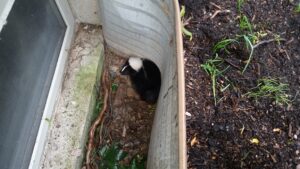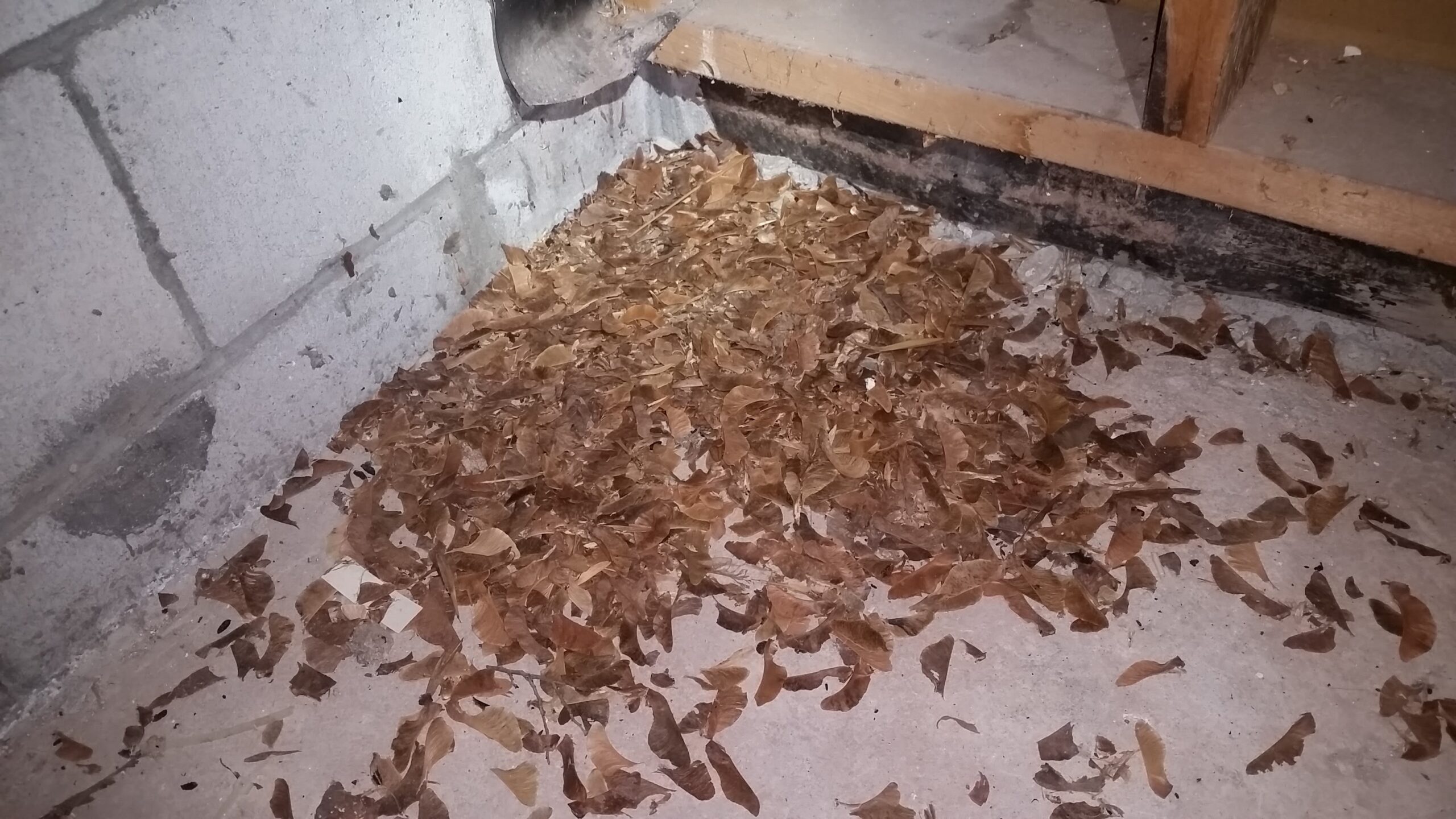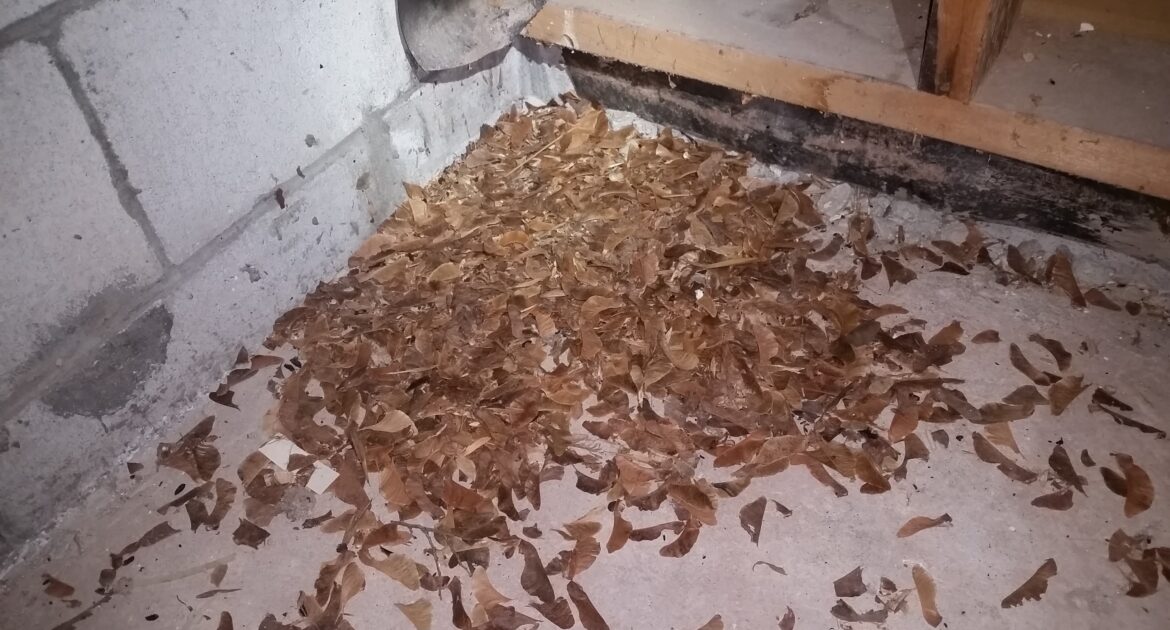The arrival of autumn means that winter is just around the corner. As humans are bringing out warmer clothes and enjoying their favourite fall treats, animals are getting ready for the colder months. All wildlife need to ensure is that they can stay warm and sufficiently fed throughout the winter. Understanding how each species acts during the autumn can help you plan your wildlife control strategies.
Raccoons
Like many mammals, raccoons spend a lot of time sleeping during the winter, and many enter a deep sleep hibernation-like state called torpor. Plus, there are a lot of new raccoons that have grown up enough since the spring to seek out their own homes.
The main objective for raccoons in the fall is to prepare warm and cozy dens. They may find natural hideaways such as tree hollows or caves. However, if raccoons are near humans, they often take advantage of porches, sheds, crawl spaces and anyplace else that is warm and safe.
Mice
Surprisingly, mice do not hibernate and are very active during the winter. They may also enter torpor but only when necessary to survive. For the most part, they continue to find food and materials for their homes. Mice love to stockpile while they can.
In areas with humans, mice love finding places to live indoors where they can be warm and safe from most predators. Additionally, they usually have access to a supply of food. When the weather gets cooler, there are fewer seeds on the ground and less in bird feeders. So, expect mice to be looking for both pet and human food to snack on.
Squirrels
Squirrels typically birth two litters per year. Since the first comes in the spring and the second in late summer, squirrel mothers may be still raising their most recent litter in early fall.
Beyond that, they are preparing their dens and storing food for the winter. Like raccoons, squirrels don’t hibernate but also spend a lot of time in their dens during the cold weather. They may venture out a little, especially if their supplies start to drop. However, their goal in the autumn is to be ready to make it through as much of the winter as possible while staying hidden away, safe and warm.
Bats
During the autumn, bats are at their busiest. Because their pups are getting old enough to fly and find their own food, the active bat population starts to get noticeably larger. Since they like to eat insects, bats are gobbling up as many as they can before the cold weather kills off their prey.
Bats enter full hibernation during the winter, so during the fall season they are preparing their bodies ready to rest. Although bats famously like to live in caves, they will make a den anywhere that is warm, quiet and dry. Therefore, attics become common targets for them. In many places in North America, it is also illegal to disturb bats once they have entered hibernation, as waking them would put them in serious danger of survival.
Birds
Many birds migrate to warmer climates for the winter. During the autumn, you will see flocks of birds flying overhead. However, not all species migrate. Those that stay around look for warm areas to build nests for shelter during the winter, much like their mammalian friends on this list.
Expect to find birds setting up shop in attics, roof vents, ledges, soffits and eavestroughs during the fall. They may also take advantage of popular fall decorations as nest-building supplies. You may notice them stockpiling food so they will be well-supplied throughout the winter.
Skunks
 Like many other mammals, skunks enter torpor to reduce their caloric needs during the winter. They spend the autumn finding dens for warmth and security. Skunk babies typically are weaned during the fall but will stay with their mothers for their first winters.
Like many other mammals, skunks enter torpor to reduce their caloric needs during the winter. They spend the autumn finding dens for warmth and security. Skunk babies typically are weaned during the fall but will stay with their mothers for their first winters.
Skunks usually look for dens that are close to the ground because they are poor climbers. These shelters can be porches, decks and sheds in human neighbourhoods. They also make or find burrows underground, often below rocks or in fallen trees. Skunks prefer living anywhere that they can be hidden and protected.
Get Wildlife Removal Help This Autumn
Although the above species are all fascinating and fun to watch, they can be dangerous if they find homes on your property. When disturbed or threatened, they can attack by means of defending themselves, especially if surprised during winter. In addition, they may carry diseases. If you have a wildlife control problem on your property, contact Skedaddle Humane Wildlife Control. We help relocate animal intruders and ensure that your home is protected against future incursions.




